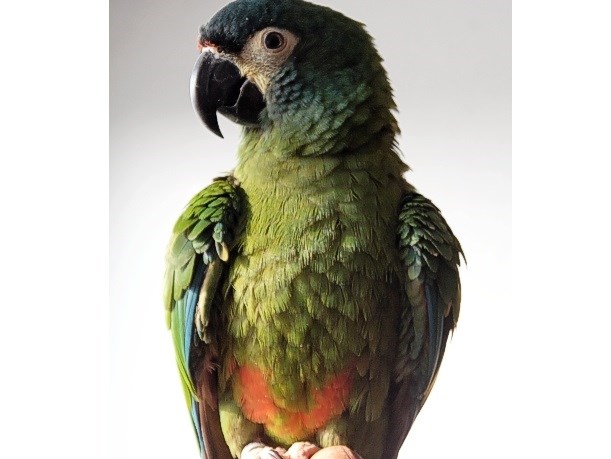Bornavirus identified from a Swedish Blue-winged macaw

The genus Orthobornavirus comprises RNA viruses infecting humans, mammals, birds and reptiles, where parrot bornavirus 1 to 8 causes fatal neurological and/or gastrointestinal syndromes in psittacines. There is, to the best of our knowledge, no publication describing avian bornaviruses in pet parrots in Sweden.
We aimed to identify and to produce epidemiologic knowledge about the etiologic agent associated with a history of severe weight loss and death of a Primolius maracana.
Methods and results
The results of histopathology, immunohistochemistry and real-time RT-PCR were compatible with avian bornavirus infection. Sequencing indicated infection by parrot bornavirus 4 (PaBV-4). The genotype reported shared high identity with PaBV-4 identified from pet psittacines and from wild birds in several countries. The N gene and X protein showed genotype clusters formation. P protein revealed to be more conserved within and between species of bornaviruses. Findings suggest horizontal transmission within and between avian orders and species.
Conclusion
There seems to be a worldwide trading without biosafety measures, hence, further disease transmission could be avoided. For screening purposes, the P gene is a good candidate as a universal target in molecular diagnostics. Wild birds may be key pieces in the puzzle of bornavirus epidemiology.
Link to the publication
https://doi.org/10.1080/20008686.2018.1547097
Reference
Cavaleiro Pinto, M., Rondahl, V., Berg, M., Ågren, E., Carvalheira, J., Thompson, G. & Wensman, J.J. 2019. Detection and phylogenetic analysis of parrot bornavirus 4 identified from a Swedish Blue-winged macaw (Primolius maracana) with unusual nonsuppurative myositis. Infect Ecol Epidemiol, 9(1):1547097.